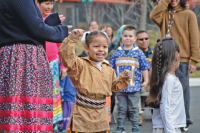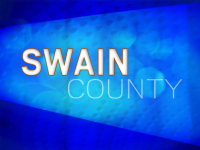The countries of Folkmoot ‘14

Colombia – Fundacion Artistica Del Tundama
Based in the city of Duitama, Colombia, Fundacion Artistica Del Tundama’s traditional dances are cheerful, colorful, and romantic and reflect the personality of Colombians. Bright and vibrant costumes representing the flora of the Andean region of Colombia are beautiful and uplifting. Tundama’s diverse repertoire includes a mesmerizing dance in which the ladies hold bowls of fire, while spinning their skirts with ease.
Other dances represent the fairs and festivals of folkloric Andean region of Colombia, the festival of St. Peter and St. John in the Tolima, and the coffee region. Currulao, abozao Andarele dances are elegant, and romantic, and portray the strength of the black Africans who arrived on Colombia’s coast. Costumes of the dance “Barranquilla Carnival” reflect the sun and Caribbean Sea with many coastal carnival characters as marimondas, congos and devils recreating one of the most important festivals of intangible heritage of humanity.
Tundama has participated in other international festivals like Folkmoot in Mexico, Peru, Ecuador, Turkey, Hungary, Czech Republic, Poland, and have appeared in the CIOFF flagship event, World Folkloriada, in Anseong, Korea, in 2012.
Hawaii USA – Ahuna Ohana
The Ahuna Ohana dance troupe is all family. Their dances include lively music with gourds and bamboo, diverse hula dances, hoop dances, and flaming swords! The flaming sword dance is known as ‘The Dance of Death;” it is done after victory in battle and includes the warrior spinning the flaming swords around in to show his bravery.
Other dances include a hula (story with the hands) that tells of the beauty of “Lipoa” (seaweed) which dances with the currents of the ocean. The “Hawaiian War Chant” song tells of the meeting of two people in love. This song was featured at Disney’s Enchanted Tiki Room and in “Lion King.” The group also performs a Puili Hula which is a dance with bamboo and floral dresses with leis.
Their diverse repertoire includes traditional Samoan, Navajo and Tahitian dance and music.
Taiwan (Chinese Taipei) – Chinese Arts Dancing Ensemble
The Chinese Arts Dancing Ensemble was founded in 1995 by Miss Wang, Hsiang- chin. The group’s objectives are to convey the essence of the Chinese culture, cultivate the beauty of dancing art and promote the development of dancing art in Taiwan. To achieve these goals, the group recruits the best local dancing instructors to improve its members’ dancing skill; moreover, the group invites overseas instructors every year to bring international perspectives to its members, providing cross-cultural inspiration and the diversification of dancing performance around the world.
Trinidad – Diatonic Pan
Diatonic Pan is a group of musicians and dancers from Siparia, Trinidad, whose lively music is aimed at taking audiences to the beaches of Trinidad. Their instruments include steel pans, bongos and a multitude of drums, including African. Diatonic Pan are also members of Pan Trinbago. They have been finalists in The National Music Festival and have won first place in the “I Can Play” Music Competition. Their performances portray triumph over death (limbo), music as a solution to violence, and a love dance.
Turkey/USA – Bluestar Turkish Folk Dance Troupe
Hit of the 2005 International Festival in Raleigh, the Bluestar Dance Troupe performed their dynamic repertoire of traditional Turkish dances as part of the Music of the Carolinas series. Founded in 2004 by folk dancer Zeki Maviyildiz, the Bluestar Dance Troupe explores the rich history and cultural heritage of Turkey as dramatized by indigenous dances, costumes, and music.
Born in Turkey, Zeki Maviyildiz has traveled to more than 25 countries as part of the Turkish National Folk Dance Troupe before moving to the United States to pursue his education and passion for promoting Turkish performing arts. While living in the Triangle, Maviyildiz has become an integral part of the area’s dance scene, performing with the Opera Company of North Carolina, the Broadway dance project in Raleigh, Duke University’s Ballroom Dance Team, and the International Festivals of Raleigh and Charlotte.
Romania – Avram Iancu
Avram Iancu’s dances are a combination of elements: regional style, motifs, musical rhythm, choreography and social occasion. A change in one or more of these elements can create another dance, sometimes too subtle for a visitor to understand. As newer dance formations become fashionable, they combine with elements of the existing music and dance to give new local variants. New melodies may be used for old dances and new dances danced to old melodies.
The selection of dances performed in each Romanian village is often done in a fixed order, the slowest dances first, then sometimes men showing off dances and ending with the fastest dances. These are known as dance cycles and are best developed in Transylvania. These dancers are dressed in simple peasants’ clothes, with ornate stitching details and vibrant colors.
Russia – Chuvashian State Ensemble
The Chuvashian State Ensemble’s spectacular cavalcade of music and dance encompasses the fire, excitement and unique energies of the Russian Cossacks; a people from the wide-open spaces and sun-drenched meadows of the region to the north of the Caucasus, famed for their love of horses and independence.
The Cossacks’ fiery dances and songs are as true and honest as the souls of their country folk, exuding yearning, bravery, hope, love and passion. The highlight of this spectacular show is the Great Cossack Dance for which special sabres have been made of titanium, ensuring sparks really do fly.





